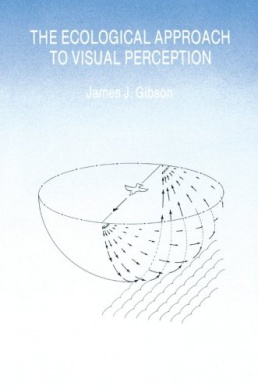The Senses Considered As Perceptual Systems Gibson Pdf Reader


In lieu of an abstract, here is a brief excerpt of the content: Leonardo,Vol. Pergamon Press 1968. Printed in Great Britain GUY s. MBtraux, Corresponding Editor Readers are invited to recommend books (within the scope of the journal) to be reviewed. Only books in English and French can be reviewed at this stage. Readers who would like to be added to Leonardo’spanel of reviewers should write to the Founder-Editor, indicating their particular interests and specialisation.
Full-Text Paper (PDF) Consciousness and Cognition 2008-10-01T00:00:00.000+0000 Following on from ecological theories of perception, such as the one proposed by [Gibson, J. The senses considered as perceptual systems. Boston: Houghton Mifflin] this paper reviews the literature on the. The Senses Considered As Perceptual Systems. Save to my reading list. Follow the author(s). Edit this record. My bibliography. Export citation. Direct Perception, Misperception and Perceptual Systems: J. Gibson and the Problem of Illusion.David A. Givner - 1982 - Nature and System 4.
Nous serions reconnaissants 2 nos lecteurs de bien vouloir nous indiquer les livres-conps dans l’esprit de notre revue-qui pourraient faire l’objet dun compte rendu dans lesprochains nume‘ros. Seuls les ouvrages re‘dige‘sen anglais ou enfrangaispeuvent &re pris en conside‘rationpour le moment. Les lecteurs qui de‘sireraient.figurer parmi les critiques de livres peuvent s’adresser au Fondateur-Directeur de Leonardo, en indiquant leurs inte‘rr@ts particuliers et leur spe‘cialization.
TheSensesConsidered asPerceptualSystems. Gibson, Houghton Mifflin, Boston, 1966. 351pp., illus., $7.50. Mediarecover Crack Serial. Artists traditionally are experimenters in visual psychology.
Cezanne’s preoccupation with edges, Monet’s attempts to catch the highlights of a sundrenched landscape, and Seurat’s decomposition of a scene into dots-all may be regarded as consciousexcursionsintovisualpsychology. Despite the large body of literature in scientific visual psychology, most artists do not appreciate the relevance of that work to art, and for good reason. Psychologists tend to worship the methods of the physical sciences which have advanced so spectacularly, due in a large measure, to reducing the number of variablessothat the essenceof a problem is revealed. As a consequence, the psychologist examines isolated phenomena free of (what he thinks) are extraneous variables.
But art is not like this-the impact of a painting is not due to the sum of its parts. Perhaps it is for this reason that many artists regard the work of psychologists as sterile or, at least, irrelevant to art. Psychologists, on the other hand, may regard artists as being verbally inarticulate or, perhaps, lacking in mental discipline. The gap between the artist and the psychologist is so vast that a possible rapprochement seemed out ofthequestion. Now along comes the startling book by the psychologist, J. This book will, I am convinced, prove to be a bombshell for psychologists. It could, too, be a revelation for the artist.
For Gibson, perception is not a mere reception of outside stimuli which the mind stores, and like an electronic computor, then dutifully proceeds to analyze. Surely the eye in its rapid unconscious movements receives millions of images. But we do not mull over these messages along with all the others of our past experienceto arrive at the conclusionthat ‘thisis a door’ when we see a door.
Download Arabic Language For Samsung Galaxy Young. Gibson shows with many and varied examples that the perceiver is an active participant, who searches for stable factors (invariants) in his environment. Primitive examples of invariants are that light generally comes from above, and that the pull of gravity is downwards. This probing or searchingis likened to a man groping in the dark, who must run his fingers over objects in order to recognise them. Indeed, Gibson amplifies on this sense, the haptic sense, and describes his masterful research on form and touch, an area sorely neglectedby other psychologists. Gibson shows with illustration after illustration that all the senses work together in the search for invariants. His examples are drawn from the modern psychological literature (he provides a large bibliography) but is interpreted in this new light.
Some of his examples are so commonplace as to be disarming. He teaches us that from our everyday experience we can learn how delicate and subtle is the interplay of the sensesin our search for perceptual invariants. Professor Gibson has certainly proven his point, namely that ‘A perceptual system hunts for a state which we call “clarity”.’ Where he fails, and he admits this, is to explain how the perceivertunes in (or ‘resonates’ with) the perceptual invariants of our environment. This book is warmly recommended to all artists 89 90 Books-Livres and others who, to use Gibson’s words, ‘want to look for themselves.’ Gerald Oster, Polytechnic Institute o f Brooklyn, Brooklyn,N. SymCtrie et MathCmatique Moderne. • If you would like to authenticate using a different subscribed institution that supports Shibboleth authentication or have your own login and password to Project MUSE, click 'Authenticate'.
• • • You are not currently authenticated. • View freely available titles: OR.